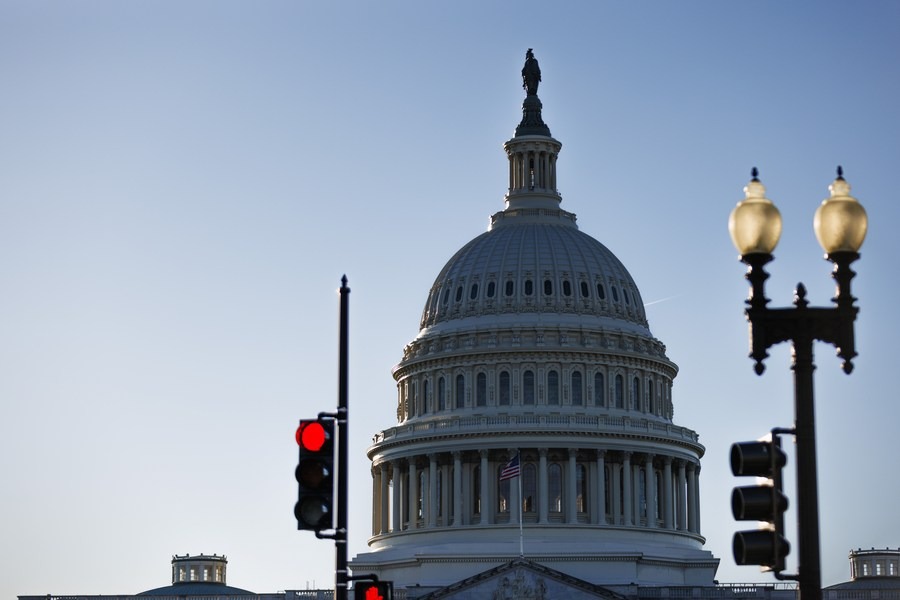Bird flu tightens grip on California as human cases rise


SACRAMENTO, the United States -- California's battle against avian influenza A (H5N1) intensified amid spreading infections across dairy farms and a growing number of human infection, including two newly confirmed cases in Stanislaus and Los Angeles counties.
The virus, commonly known as bird flu, has infected 659 of California's 984 dairy operations since August, with one-quarter of these cases emerging in the past month alone, according to California authorities.
The rapid spread through the state's dairy industry prompted Governor Gavin Newsom to declare a state of emergency last week to protect agricultural workers and public health.
"This proclamation is a targeted action to ensure government agencies have the resources and flexibility they need to respond quickly to this outbreak," Newsom said in a statement.
The outbreak's human impact has grown increasingly severe, with California reporting at least 36 confirmed cases -- more than half of the nation's total of 65, according to the latest report by the U.S. Centers for Disease Control (CDC) on Tuesday, though the actual count is likely higher as recent local confirmations may not yet be reflected in federal data.
Two new cases were confirmed Monday in California's Los Angeles County and Stanislaus County. Both individuals were exposed to livestock infected with bird flu at a worksite, and both had mild symptoms and were treated with antiviral medications, according to the two counties' health departments.
Public health officials have been monitoring wastewater across the state, detecting the virus in several Bay Area locations, including San Francisco, Napa, and San José. However, California State Epidemiologist Erica Pan explained to ABC30 that these detections might be primarily due to "residential or other commercial milk dumping down in the sinks."
Although health officials said the risk remains low for the general public, the virus kills 90 percent to 100 percent of infected poultry and about 1 percent to 2 percent of cows. California State Veterinarian Annette M. Jones noted that infected cows may never fully recover.
As the country's largest dairy producing state, California faced a heavy economic toll from the bird flu outbreak. The virus has led to quarantines and increased testing requirements. The authorities said the state is now testing its 1.7 million cows weekly.
California's milk production dropped 9.2 percent in November from the same month last year, the most significant decline recorded, according to the monthly Milk Production Report released by the U.S. Department of Agriculture (USDA) on Dec. 19. Meanwhile, California's reduced output has led to a 1 percent decrease in national milk production, raising concerns over U.S. dairy product availability and costs.
The state's poultry operations have also been hit hard. The California Department of Food and Agriculture reported that 51 commercial poultry operations and nine backyard flocks across the state had been affected.
The virus has also appeared in unexpected places, with Los Angeles County confirming two cases in domestic cats that consumed contaminated raw milk.
Los Angeles County health officials warned against feeding pets raw food Tuesday after one brand had samples of bird flu virus detected, noting that a house cat in Oregon had died from consuming the recalled raw frozen pet food.
Worker safety has become a critical issue, with the state distributing over 4 million pieces of personal protective equipment. However, Elizabeth Strater, a spokesperson for United Farm Workers, told health news site STAT that many workers avoided testing or reporting symptoms due to wage concerns.
"Right now, it's a bad gamble for workers," she said, advocating for compensation for testing and wage coverage for those testing positive.
The USDA has implemented new containment measures, including a mandatory national milk testing program announced on Dec 6. However, some experts questioned whether these measures were sufficient.
Seema Lakdawala, an associate professor at Emory University's School of Medicine, told STAT that while the new testing strategy would improve understanding of the virus' spread, it may be "arriving too late" -- nine months into the outbreak.
The state is investigating transmission patterns through 40 research projects. "Honestly, there's probably more we don't understand than we actually do know" about how the virus spreads between farms, said Mike Payne, a food animal veterinarian at University of California, Davis.

































